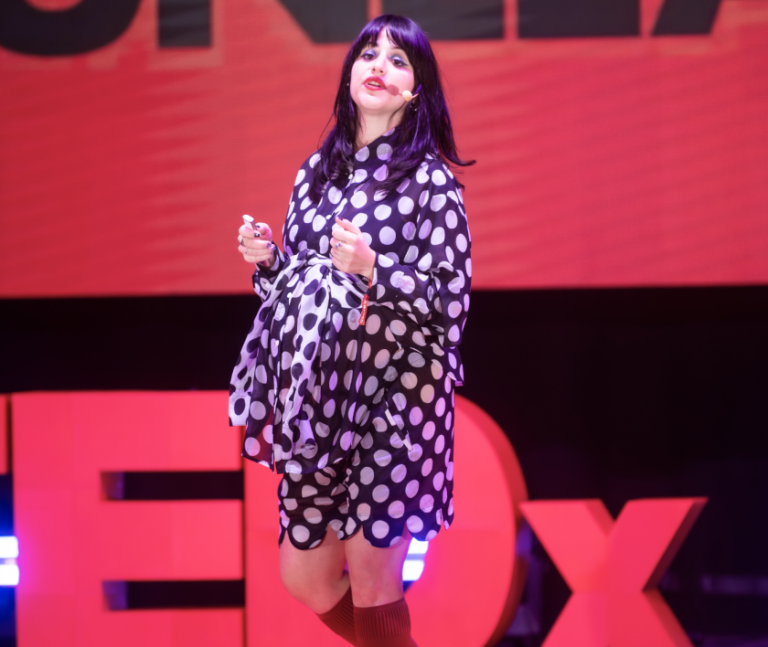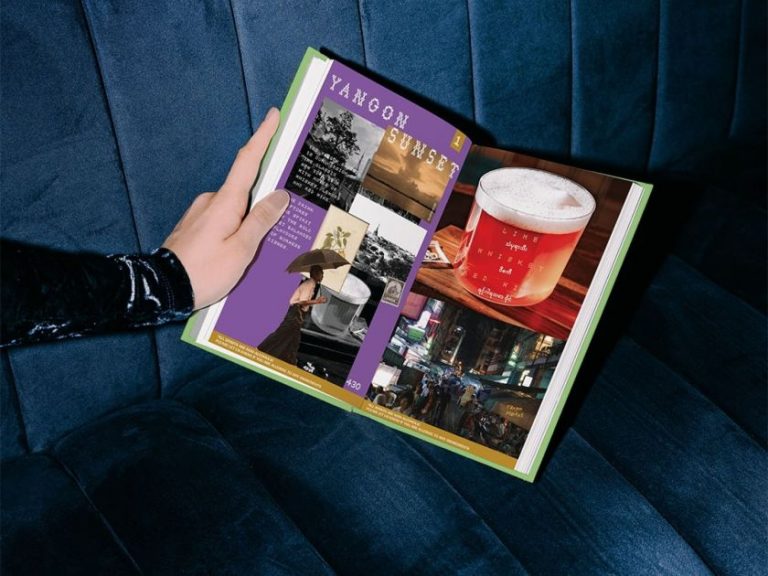Image licensed via Adobe Stock
Not to be confused with overconfidence, true self-belief is a foundation that fuels creativity and resilience. Here’s why it’s so important and how to develop it for yourself.
As creatives, we all want to believe that we’re talented, hard-working, driven, capable and ready for anything that life throws at us. In short, we want to believe in ourselves.
The good news is that as you focus and improve over time, that should come naturally. You should find that people aren’t just returning your calls; they’re hunting you down and trying to give you work. That, in turn, will make you feel more confident. And as you project that confidence, more people will take note of you. A virtuous circle.
Well, that’s the theory anyway.
In practice, many of us are held back by our shy or introverted nature. Couple that with the typical British fear of being seen to “show off”, and the feeling that everyone on social media is doing better than you (even though they aren’t), and even talented, experienced professionals can end up lacking confidence.
Take me, for instance. I set up Creative Boom in 2009 with no money whatsoever. Through grit, hard work, determination, and many serious personal and business challenges along the way, I’ve made it into a global success, both critically and commercially. If anyone should feel confident about my abilities to take on anything, it’s me.
And yet.
Since 2018, I’ve been intensely aware of how important video, especially short-form video, has become for the media specifically and our culture more broadly. However, the personal fear of putting my face on camera has held me back.
In 2024, though, I’ve finally summoned enough belief in myself and my brand to throw myself into it. I won’t lie: it’s been scary, to say the least, and I’m still very much learning. But I’m so glad I’ve made a start, and already, the results have been fantastic.
Taking the plunge
Through my videos, I’ve shown people the real me. As a result, I’ve had a ton of new connections come through on LinkedIn. Loads of nice emails. Expanded my network. And gained a ton of new followers via Creative Boom.
In short, it’s opened more doors in less than a fortnight than what would normally have happened in six months. It’s cultivated a new level of conversation with the Creative Boom community and given people an excuse to reach out to me. And it’s given my platform a voice again, where X/Twitter once did, before all the algorithm changes.
Do you know what all of this has made me realise? That self-belief is a quality we often undervalue as creatives. And the good news is that it’s not something you’re born with; you either have or don’t have. It’s something we can all cultivate with a bit of effort.
In this article, I’ll share some tips on how to do so, with tips and insight from the Creative Boom community. You can also read the full discussion of this topic on Threads and X.
1. Tell yourself the right story
Let’s start by defining our terms. What actually is self-belief?
I’d argue that, at its core, self-belief is the quiet conviction that your ideas, skills, and perspective have value. It’s the inner voice that encourages you to take risks, to put your work out into the world, and to keep pushing forward even in the face of rejection or criticism.
Delano Patterson, artist and professor of digital media at SUNY Buffalo State University, puts it well. “As a design professor for two decades, I’ve learned that the stories we tell ourselves about ourselves directly affect our performance,” he explains. “To that end, I make sure students have and believe in a personal narrative of capability and success.”
This narrative is not, though, about inflating one’s ego or ignoring areas for improvement. It’s about recognising your strengths, acknowledging your potential for growth, and trusting in your ability to overcome challenges.
In other words, if you tell yourself that you’re useless, hopeless and not as good as anyone else, you’ll end up believing it, and it will become true.
However, if you tell yourself the story that you’re doing the best you can, you’re getting better, and you’ll get there in the end, that will become true instead. It’s your choice.
2. Trust the process, not just the outcome
Another key to self-belief is trusting the process of creation rather than fixating solely on the final product. This mindset allows for experimentation, learning, and growth—all essential components of creative development.
Călin Balea, founder of interface and brand design studio Contrast, says that what’s helped him most is “embracing the idea that no design is ever perfect and you’re not a bad designer for producing something imperfect. Keep iterating as you learn. That’s how everybody works, even world-class designers.”
Doing so not only relieves the pressure to create “perfect” work but also encourages continuous improvement and innovation. Believing in your ability to learn and grow creates space for taking creative risks and pushing boundaries.
3. Silence your inner critic
For many creative professionals, one of the biggest obstacles to self-belief is the inner critic—that nagging voice of self-doubt that questions one’s abilities and worth. Overcoming this internal negativity is obviously crucial.
That’s something illustrator Helen Ridley has a lot of experience with. “Personally, it has taken practice to believe in myself and my abilities as an artist,” she says. “Part of this has been about embracing rejection and understanding that it’s an important part of developing your work. The more I’ve put myself out there, regardless of the response, the more opportunities I have found, and my confidence has built.”
One practical technique for silencing the inner critic is to keep a record of your positive feedback, accomplishments and milestones. Katie, a freelance merchandiser and Shopify VA, sees the sense in this. “It’s important to remember all the things you have achieved so far, in those moments where your confidence may be low,” she explains, and recommends “keeping a folder of emails of nice feedback to look back on when you need a confidence boost”.
4. Harness rejection to build resilience
In creative fields, rejection is often an unavoidable part of the journey. However, it’s the ability to bounce back from these setbacks that truly defines success. Indeed, building this resilience is part of where self-belief comes from.
But psychologically, how do you cope with rejection? Here’s some good advice from art director Sara L. Soltis. “Whenever I begin to doubt whether I belong in this industry or have the talent to succeed,” she says, “I shift my perspective and ask, ‘Even if I don’t, who’s going to stop me from trying?'”
This kind of determination in the face of doubt or rejection is what allows creatives to continue growing and eventually find success. It’s about believing in your potential, even when others might not see it yet.
5. Understand the difference between self-belief and overconfidence
While self-belief is crucial, it’s equally important to distinguish it from overconfidence. True self-belief is grounded in reality and open to growth, while overconfidence can lead to stagnation and missed opportunities for improvement.
Multidisciplinary creative Chris Spalton offers a good example to follow. “I just work on the basis of ‘do I think the world will be a slightly more interesting place if I put this idea out into it?’,” he explains. “The answer is always yes. No expectations. Launch and scale things step by step, sensibly. Don’t put all my eggs – i.e. money – in one basket. Enjoy the process. See what happens.”
This kind of mindset allows for confidence in one’s ideas, while remaining open to feedback and adaptation. It’s about believing in your vision while also recognising that there’s always room for growth and improvement.
6. Get help from the community
While self-belief ultimately comes from within, the support of a community can play a crucial role in nurturing and maintaining it. Connecting with other creatives, sharing experiences and receiving feedback can all contribute to a stronger sense of self-belief.
But what if that feedback is negative? Won’t that be counterproductive? Illustrator Judith Mayer argues not. “I credit all of the critiques I participated in at fine arts college for my confidence. Learning to evaluate my work and the work of others and having to defend my decisions prepared me to create work I believe in and gave me the ability to communicate my process and decisions to my clients. This has led to successfully working with several of my clients for 20+ years. My clients trust me because I trust myself.”
Being involved in a community is also a great way to avoid jealousy of other people’s success. As illustrator Ollie Brown poins out: “Seeing a lot of other amazing work on social media can have both a positive and negative effect on your attitude towards your work. It can be inspirational, spark ideas or even just make you feel a sense of wow. But it can also create self doubt in your own work and if it’s any good.”
Surrounding yourself with supportive peers and mentors can be a great help in preventing this from happening. By engaging with creatives with a wider range of skills and experience, you’ll be much better equipped to deal with the social media-prompted idea that “everyone is doing better than you”. Not to mention creating an environment that fosters growth and reinforces your belief in your abilities.
7. Forge daily habits
Building and maintaining self-belief is an ongoing process that requires consistent effort. To meet this challenge, it can be useful to develop daily habits and practices to nurture your confidence and keep self-doubt at bay.
Part of this is simply following the Nike slogan: Just Do It. As Karl McCarthy says: “For me, it was never about believing in myself at first. It was more about the fact that all I wanted to do was create. Sure, there was a small part of me that believed, but not enough to think I could run my own business and support my family. Over time, though, my belief has compounded, and I realise that patience, support, and understanding my purpose have been key to that growth.”
Further practical strategies for cultivating self-belief daily include:
Set small, achievable goals: Consistently meeting them builds confidence over time.
Practise positive self-talk: Be aware of your own negativity and challenge it.
Celebrate small wins: Acknowledge your achievements, no matter how small.
Continuous learning: Developing your skills helps boost confidence in your abilities.
Seek and accept constructive feedback: Use feedback as a tool for growth rather than a measure of your worth.
8. Put your work out there
One of the most effective ways to build self-belief is simply by taking action and putting your work out into the world. Although this can be daunting, it’s often the first step toward building real confidence in your abilities.
“It can be so hard to hold onto self-belief as a creative who works alone, especially when our peers’ highlights are shown to us daily,” says illustrator and animator Ellie Foster. “But I remind myself there’s no one out there shouting about me but me. And aside from some drawing skills, it’s all I really have to make myself known. I gather as much self-belief as I can and let it drive me to finish that project, share it and keep talking about its place in the world. Oh, and when I feel cringe about sharing, I push through and do it anyway.”
This willingness to push through discomfort and share your work is often what separates successful creatives from those who struggle to gain traction. It’s about believing in the value of your work enough to let others see it, even when it feels vulnerable to do so.
9. Embrace imperfection and focus on growth
A crucial aspect of self-belief in creative fields is embracing imperfection and viewing it as part of the growth process. This mindset allows for experimentation and innovation without the paralysing fear of failure.
Illustrator and author Katie Vernon encapsulates this beautifully. “For me, it’s been more a belief in growth and consistency,” she says. “These aren’t actually that hard to believe in because the more time you put into something, the more you grow. The harder part at the start was believing that my work was worth sharing: that’s a totally uncomfortable leap. I can’t say that leap has gotten more comfortable over time, but the more I shared, the better I got at sitting with the discomfort.”
By focusing on growth rather than perfection, you create space for taking creative risks and pushing your boundaries. This approach not only leads to better work over time but also builds a more resilient sense of self-belief that can weather the ups and downs of a creative career.
Why it’s all worth it
This might sound like a lot. But ultimately, it’s very much worth it. Because when you truly believe in yourself and your vision, it shows in your work. And this authentic confidence can be the differentiating factor that sets your creative output apart in a crowded market.
As designer Fabián Sanabria explains: “Confidence is required constantly as designers. Design itself is a series of decisions that lead to a bigger outcome: choosing the right font, colour or concept. Without confidence in our choices, we would be paralysed by the empty page or stuck in an endless iteration loop!”
This confidence in decision-making allows for more bold, innovative work. It enables you to trust your instincts and take calculated risks that can lead to creative breakthroughs.
Conclusion
We’ll end with some advice from collage, print and surface designer Megan Fatharly that sums a lot of this up neatly. “Believing in yourself is essential in the creative industry, where uncertainty and rejection are common,” she says. “Self-belief is not about being overconfident; it’s a quiet conviction that you have the skills and ideas to make an impact.
“Early in my career, I struggled with self-doubt, often questioning if my work was good enough. But embracing self-belief allowed me to take risks, pitch bold ideas, and keep going despite setbacks. For those in a similar situation, remember that self-belief grows with every small victory.
“Celebrate those moments, stay true to your vision, and don’t compare yourself to others. Trust that your unique voice has value, and keep pushing forward even when it feels challenging. Remember, every creative journey is different, but believing in yourself is the foundation that helps you navigate it all.”










